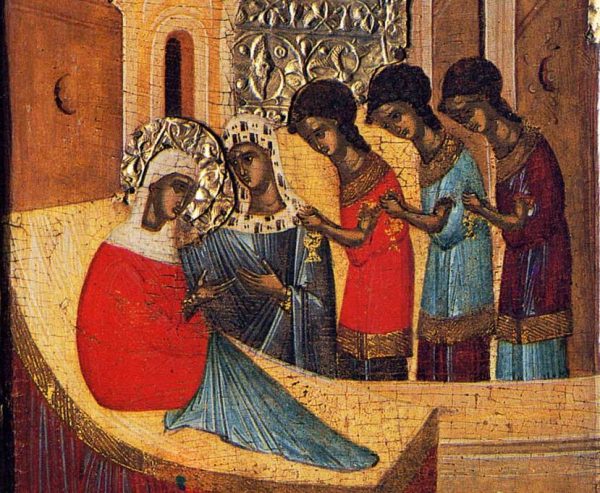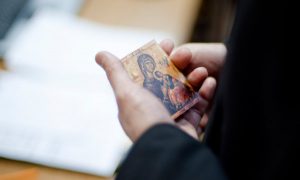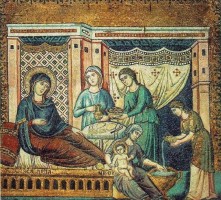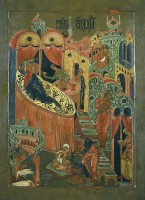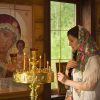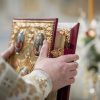“Thy womb has offered to Christ, the Lamb of God, our substance to be His fleece; therefore in our hymns we all honour thee on this day of thy nativity from Anna.” (Canticle one, second canon, 4th verse, from Matins for the Birth of the Mother of God, by St. Andrew of Crete)
Many converts to Holy Orthodoxy have trouble making a personal connection with Mary, the Theotokos. They understand and accept the theology and the reasons why she is venerated and called upon for intercession, but on a personal, intimate or emotional level, there is not much connection. Part of the problem, I think, is that many have not come to an Orthodox understanding of nature/substance and person.
In the western theological tradition, substance is something that exists, and from which persons are derived. That is, substance precedes person. For example, it could be imagined that the substance of man existed before the first man was created. It is as if the existence of “humanness” necessitated the creation of humans, who are manifestations or examples of human substance. (May all philosophers please forgive my imprecise wording, but I think this catches the general western tendency of thought.)
In the Orthodox Tradition, you might say person precedes nature (nature and substance are synonyms in this context: nature coming from Greek works and substance in works derived from Latin), although this is not quite correct either.There is no person without nature, nor nature without person: There is no humanness without actual human beings. And so you might well ask, “What has this to do with my relationship with Mary?”
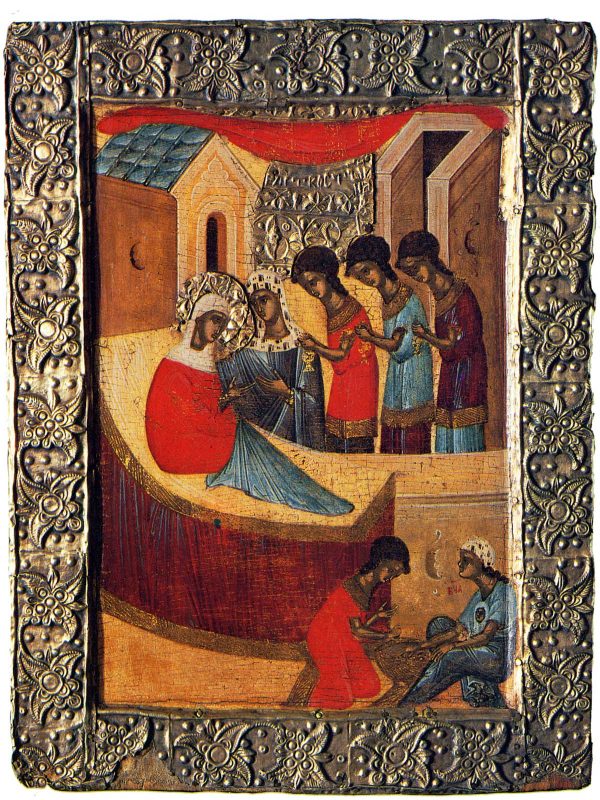
Take a look again at the verse above from Matins of the feast for the Birth of the Mother of God. In the Incarnation, Christ takes on human nature/substance to be his “fleece” from the womb of a person: Mary, the daughter of Joachim and Anna.Christ didn’t pull human nature out of the air. He didn’t take on “general” humanity (as though such a thing could be imagined). He took the humanity of a particular, specific person: He clothed himself in the fleece that Mary’s womb offered. Notice that it was offered.
Mary participated in the incarnation not only in her biology but also in her intention. She offered herself to God and thus became worthy to bear God. God comes and dwells in those who invite Him, who offer their whole lives to Him. That is, God’s works among men are synergistic, works of cooperation: man’s (or woman’s) “yes” makes possible the works of God among men. Most especially the great work of salvation, the incarnation of the Word of God, was possible only through the “yes” of the daughter of Anne.
And this woman, Mary the Theotokos, whose birth we celebrate today now stands at the right hand of Christ as his Mother and Bride where she continues to offer herself to her Son and Lord (see Psalm 44 LXX). And here is a great mystery, in as much as each of us is in Christ, she too is our mother.
Heaven is a crowded place. Somehow many western people imagine a heaven where they alone commune with God alone. This is more a description of hell than heaven (for hell is always described as a lonely place). Certainly the Bible and Church Tradition know of no such lonely heaven. The biblical language always likens heaven to a crowded place, like an imperial court, with ranks of angles and seas of people led by elders who are likened to judges and (especially in Old Testament images) to gods.But this heavenly court is not presented as a modern court of law, where impersonal law is supposed to reign supreme. Rather this is the court of the King of kings, the Son of God and the Son of Mary, a human and divine person who asks for advice (although he doesn’t need it—see 3 Kingdoms 22: 19-23, for example) and is moved by the intercessions of His fiends (Abraham and Moses, for example) and especially the intercessions of His Mother (see John 2, the wedding in Cana).
When we pray, we do well to remember that we are presenting our selves before the heavenly court, not just the King, but the whole “cloud of witnesses” who have gone before us. And since this is not a court of law (except in the sense that the King is the Law), but the court of the King of kings who is willing to be entreated by His friends, we do well to get to know His friends, the Saints and most particularly his Mother, whose “yes” opened the door for the world’s salvation.












